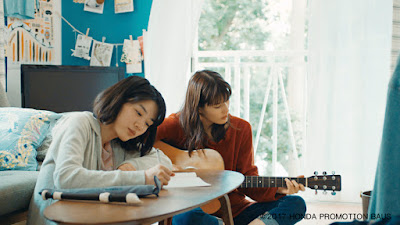**spoiler alert for the final season of
Samurai Jack**
We
all have a favorite show from years past that got cancelled or shut down before
it reached its natural end, and for each we can never help but wonder what
might have been had the creators been allowed to complete their visions. In some cases, like Firefly, all the speculation is doomed to remain just that. In other cases, like Arrested Development, years of cultural build-up finally bring
about the long-awaited continuation of the story, but the result ends up
disappointing or dividing a great number of fans, leading to the obvious
question; was it worth it to return to this world, or would it have been better
to leave well enough alone?
This
year, nearly 16 years after its first episode aired, Samurai Jack entered a rare realm of television show that not only
was able to come back after a long, long hiatus, but also managed to succeed in
concluding the story and vision of the show’s creator in a way that made the
wait worth it.
The
driving core of the samurai’s tale was, of course, his quest to find a way back
to the past and defeat Aku, thus preventing the terrible, dystopian future Jack
witnesses after being tricked and trapped in a possible future by the master of
darkness. The first smart decision the
show made when it came back was to have the resolving season be short, compact,
and laser-focused on resolving the central dilemma of the entire franchise;
does Jack succeed in defeating Aku and saving the future? Any final season that didn’t find a good way
to answer this would have been a failure, no matter how good everything else
ended up being.
It
was also a rather brave choice to make the setting so much darker and bleaker
than any past one; it’s been decades now, there are no more time portals on
Earth, and not only has Jack lost his sword, a lifetime of nonstop fighting has
worn him down to the point where we find him in the midst of a severe
existential crisis, on the verge of falling apart entirely. The scenes depicting his arguments with
himself, the voices he hears, and the stalking ghost encouraging him to just
end it all are haunting, easily the best depiction of PTSD to come out of
American animation since the fourth season of Legend of Korra.
On
top of that, while the original seasons were always extremely violent, they
could get away with a lot by only having Jack fight machines, which (somewhat)
made up for how brutally he dismembered them episode by episode. This season is far bloodier, literally, with
Jack finally facing an army of human assassins that he can only beat by killing
them, in one of the most heart-pounding action sequences in the entire
show. Viewers can differ on whether Jack
was justified in making this decision, but the show itself doesn’t try to
trivialize it or make it seem simpler than it is.
The
redemption arc of Ashi may divide fans a bit more- her budding with romance
with Jack might seem out of place at times- but in a way, given their cold and
hard lives, it makes sense than they could only find a partner in someone like
the other. The scene that turns her- the
simple sight of ladybugs in the setting sun- is a striking image, as is the
concluding image of Jack standing between a blooming cherry tree after being
forced to come to terms with the final price of defeating Aku. It is not an ending that pulls any punches,
which this series very much needed.
I
was not sure, at first, what to think of the use of Aku himself- given the
absence of Mako, it was perhaps smarter to use him less often in order to avoid
distracting us with the different voice- but he was almost too goofy and comical
at times. I never found that too
problematic, though, because it is also a fascinating twist to see such a villainous
character after getting effectively all he wants. He really does rule the world, and for a
period of time has no reason to fear the samurai, but he slowly realizes that
ruling the entire world and having no one capable of challenging him is….well...boring. And that’s certainly a take most shows like
this wouldn’t bother with.
Ultimately,
the final season does exactly what it needs to.
It powerfully resolves the tale of the samurai, and although one episode
is devoted to revisiting some of the key moments from the past show (including
several inspired cameos by the best Scotsman in the world not named Billy Connelly),
the season skillfully avoids losing itself in its own nostalgia, making sure we
have fresh characters, settings, and stories to focus on. I never expected us to actually this
conclusion, but I am glad we did, and especially glad that it’s one worthy of
the show that preceded it and any expectations I could have had going in. Samurai
Jack remains one of the seminal works of American animation, a must-see
show for anyone who likes good storytelling.
And now we must move onwards to new pastures. Goodbye, Jack. Take care.
-Noah Franc





